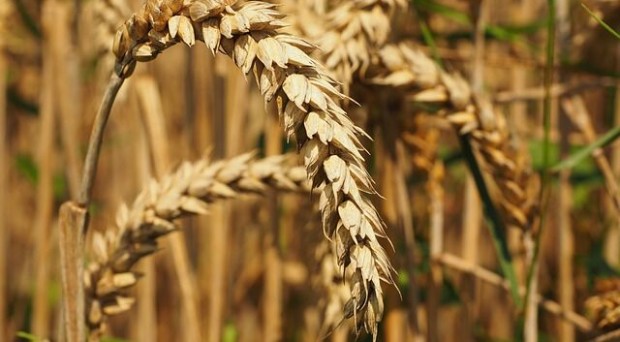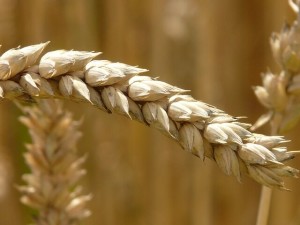
Bread wheat (Triticum aestivum) is the second most highly produced cereal worldwide, grown on more than 215 million hectares, and the leading source of vegetable protein in human food. It was first domesticated in western Asia around 11,700 years ago, after which it spread to North Africa, Europe, and East Asia. Scientists are currently trying to figure out how to feed a growing population; in the next 50 years, we will need to grow more wheat than has been produced since the dawn of agriculture.
The key to improving wheat lies in identifying genes that can be exploited to meet the increased demand for high quality food. Unfortunately, sequencing the wheat genome is proving to be quite difficult.
The complexity of the wheat genome
Bread wheat is an allohexaploid, meaning that it has six sets of seven chromosomes derived from three different progenitor species (Triticum uratru, Aegilops speltoides, and Aegilops tauschii). The wheat genome is divided into three subgenomes: A, B, and D, each of which is almost twice as large as the human genome.
The wheat genome itself isn’t any harder to sequence than smaller genomes. What researchers have been struggling with is putting all the letters together in the right order. The wheat genome contains 17 gigabases (compared to the 3 gigabase human genome), and 80% of it is repetitive sequences. Using whole-genome shotgun sequencing methods thus becomes unattractive, since they generate reads of 500-1000 bases.
To understand why this problem is so complex, imagine a jigsaw puzzle with 17 million small pieces, 80% of which are very similar to each other. An international consortium of 1,100 researchers from 55 countries has been working on sequencing and assembling the wheat genome for the last 10 years!
The wheat genome – spelt out here
The wheat genome is currently being sequenced chromosome by chromosome. In July 2014, a draft of the full genome was published in the journal Science along with a reference sequence for chromosome 3B. Because of the complexity of the genome, the draft genome has lower accuracy, with segments either missing or in the wrong order or orientation.
Since then, work has focused on producing reference-quality assemblies for the remaining chromosomes – filling in the gaps with high accuracy and removing ambiguity in the order of segments – and mapping specific genes and genomic features. Other researchers have used the draft genome to study the evolution of wheat and other cereals, and to find variability in loci encoding agronomically important traits.
Today, The Genome Analysis Centre (TGAC) in Norwich, UK, has made a more complete and accurate wheat genome assembly available to the research community. The updated genome is now assembled into fewer, larger sections of DNA covering regions that were previously not sequenced. These regions include many of the large and complex groups of genes in wheat that contribute to the nutritional and bread-making quality of the grain.

Flour power
Here at Genome Biology, we’re big fans of wheat genomics, and have put together a collection of articles that we’ve published in the last year. Highlights include a more in-depth understanding of the structure, evolution, and expression of genes from chromosome 3B, a new method for assembling the wheat genome, finding sequence variations across the genome, and identifying genes that produce important traits that we may want to exploit, like grain dormancy.
But there’s more to wheat genomics than meets the eye. Growing wheat also means dealing with a slew of pathogens that affect yield. As interest in wheat genomics grows, so too does work in pathogenomics to prevent productivity losses, like those caused by the wheat yellow rust pathogen (Puccinia striiformis f. sp. tritici).
Never miss a triticum
The updated wheat genome is another step toward a chromosome-based complete genome in this important crop species. With this information, plant breeders will have high quality tools at their disposal to identify specific genes affecting agronomically important traits, such as yield, grain size and weight, nutritional quality, and stress tolerance. This will enable farmers and breeders to produce new wheat varieties better adapted to increasing demand in a changing climate.
Dominique Morneau
Latest posts by Dominique Morneau (see all)
- Best of 2017: Top Picks from Genome Biology - 15th December 2017
- Exploring the epigenetic dynamics of early plant development - 25th September 2017
- Fascinating Plant Epigenomes - 18th May 2017
Comments